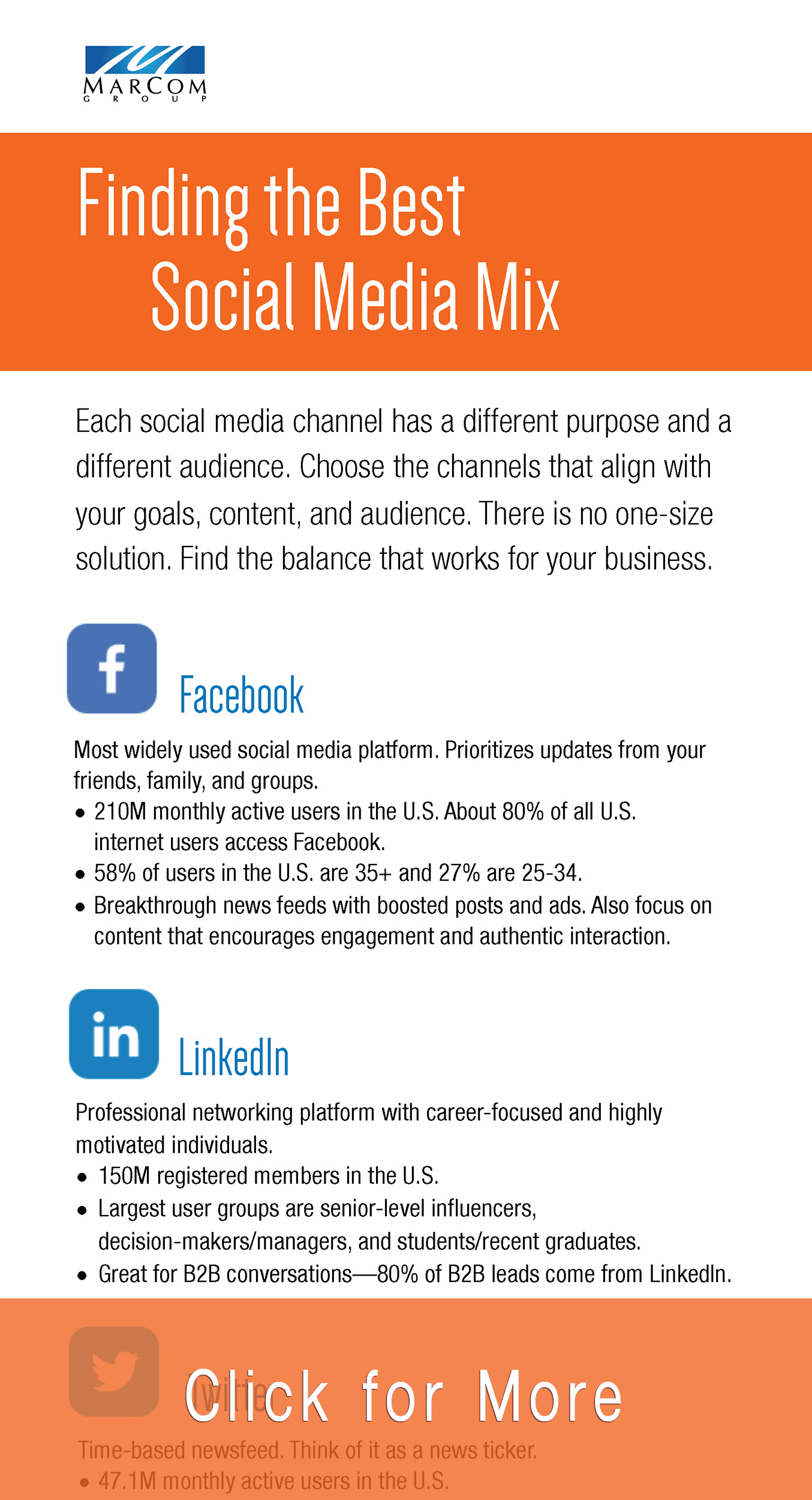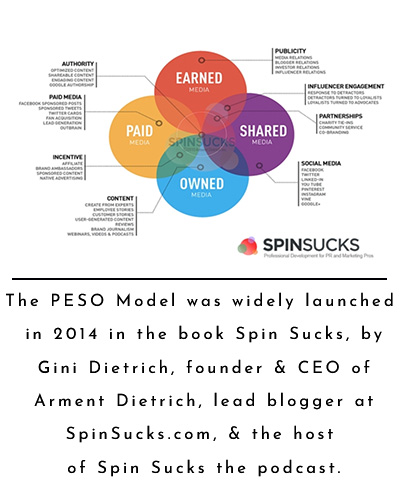Achieving your communication goals requires a portfolio of different tools, including social media. Invest in the right mix to see returns and build a successful program.
Is your organization struggling to assess the value of social media? Is leadership wondering why they need to invest time and money in virtual communities filled with cat videos?
Approach the discussion with a business mindset—the organization needs to strategically allocate its communication activities across channels to minimize risk and achieve the needed return on investment.
Asset allocation is a common and critical concept in business. You know you need an appropriate mix of investments in order to reach your needed return. You also know you need to balance those investments among different asset classes based on your timeframe and risk tolerance. Or as your mom used to say, “Don’t put all your eggs in one basket.”
Choosing the right mix of content distribution channels depends entirely on your goal, your content and your audience. Balance your communication investments across classes and subclasses based on these parameters, much as you would balance business investments across asset classes and subclasses based on the parameters of time and risk tolerance.
After a brief description of the large content distribution classes—Paid, Earned, Shared, and Owned—we’ll talk specifically about the Shared—social media—and its subclasses or channels.
Content Distribution Classes – The PESO Model
PESO stands for Paid, Earned, Shared, and Owned media. The PESO model is an integrated communication model that helps you to build a strategic and comprehensive communication plan. The model helps you focus on the four major media types and make strategic connections between your content or your owned media, and the other three media types.
- Paid Media. This is material you create and pay to have distributed. It can include print advertisements or commercials. More likely, it will be your more routine social media advertising, influencer campaigns, sponsored content, or email marketing.
- Earned Media. Any material written about your business that you haven’t paid for is Earned Media. It’s what you traditionally think of as public relations or media relations. More recently, this can also include social media influencer recommendations and online reviews on sites such as Glassdoor, TripAdvisor Inc., Amazon, and Yelp.
- Shared Media, otherwise known as SOCIAL MEDIA. This is material meant to start a conversation or connect a community. It’s more conversational in tone and can be created by your business, a more traditional media outlet, your customers, or your employees.
- Owned Media. This is your website or blog. This is all the content you’ve created. You own the full message and distribution of this material. You’ll use the other three media types to validate and amplify your owned media.
Social Media Subclasses – Channel Basics
Shared media, specifically social media, is the newest of the media types and the one evolving most rapidly. We’ve outlined the basics of the top social media channels in an infographic to help you build the best investment mix for your business.
Your communication goals, content, and audience should drive your social media decisions. Each channel has a different purpose and a different audience. You need to choose the channels that align best with your goals, content, and audience. There’s no one-size-fits-all solution—or magical investment mix—that will work for every business.
This infographic outlines the different purposes and audiences of the top social media channels—LinkedIn, Facebook, Twitter, Instagram, and YouTube. Click the image to view a larger version and download the infographic.
On audience and social media, keep in mind two common pitfalls:
- Targeting Everyone. Just because you have access to the whole world through social media does NOT mean you should try to talk to everyone at once. You don’t need everyone to ‘like’ your posts, just your key audience—the smaller group of individuals who are your real clients, customers, or employees. Aim for quality engagements, not quantity. Still think “the general public” is an acceptable audience? Read Tom Law’s article on “Why you Desperately Need a Defined Target Market.”
- Avoiding Everyone. Just because there are risks in the unknown and of losing control of your message does NOT mean you should avoid social media altogether. Your clients, customers, employees, and the media are already on social media talking about you. By not engaging in the conversation, you are ceding control of your message to someone else.
While you won’t be targeting everyone, it’s still helpful to understand how many people are on social media as a whole and one major way that social media is being used today.
- 45% of the world’s population is on social media, or 3.5 billion people. For North America, that number jumps to 70% or 230 million people on social media. (We Are Social, 2019)
- 90% of Millennials (born 1981-1996), 78% of Generation X (born 1965-1980), and 48% of Baby Boomers (born 1946-1964) are active social media users. (eMarketer, 2018)
- 54% of social browsers use social media to research products. (GlobalWebIndex, 2018) Also, 68% of Millennial job seekers visit a company’s social media properties to evaluate an employer’s brand, 56% of Generation Xers and 48% of baby boomers. (CareerArc, 2018) In other words, social media is a key research channel, a place where people are looking for service reviews and employer recommendations. For younger generations, social media rivals search engines as a research tool.
Depending on your audience, you might consider other popular social media channels, including Pinterest and Snapchat. Remember, your goal is to meet your key audience where they already are online, to encourage conversation, and to build a community. Your community location and best shared media channels will be different depending on your business and your audience.
Once you’ve identified your best social media mix, remember to incorporate best practices for posting. Your most successful content, post length, and timing can be different on each channel, just as the timing and amounts might differ when you buy different types of stock. Choosing your social media and communication investment mix is just the beginning. Your communication portfolio needs to be well managed and monitored often in order to adjust to market trends and your audience’s demands.


